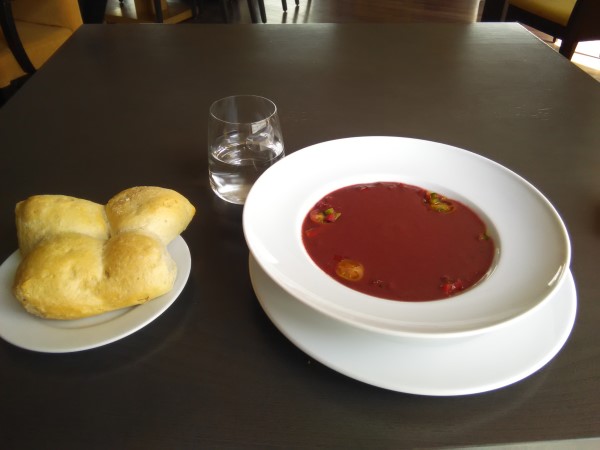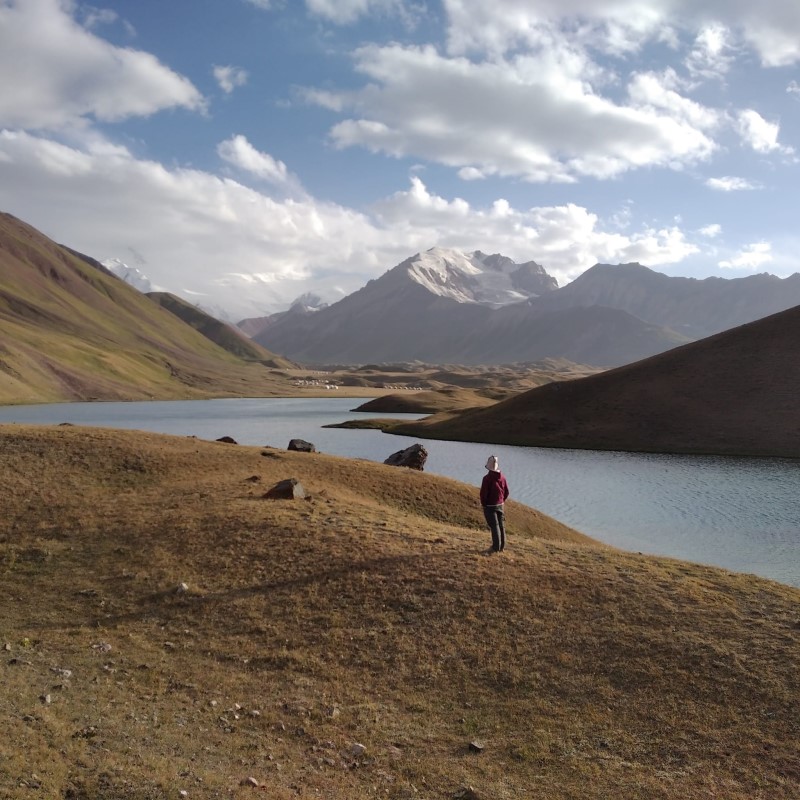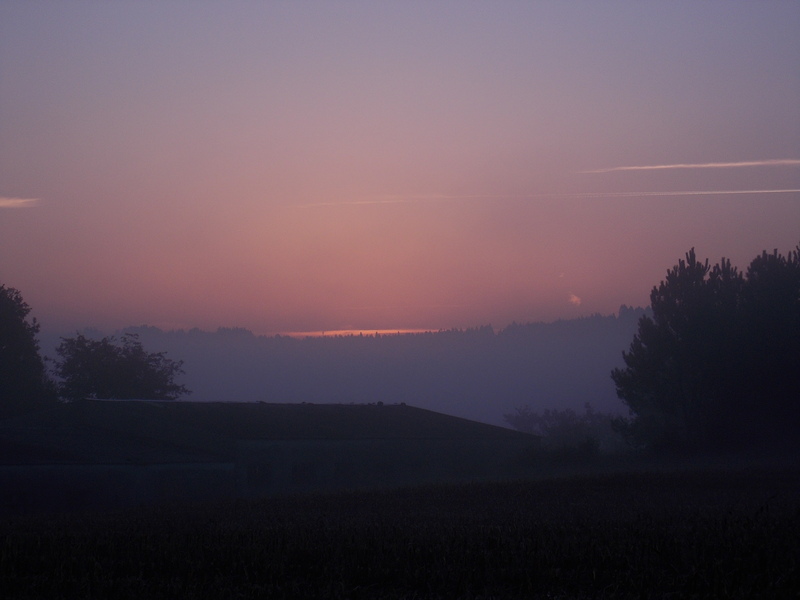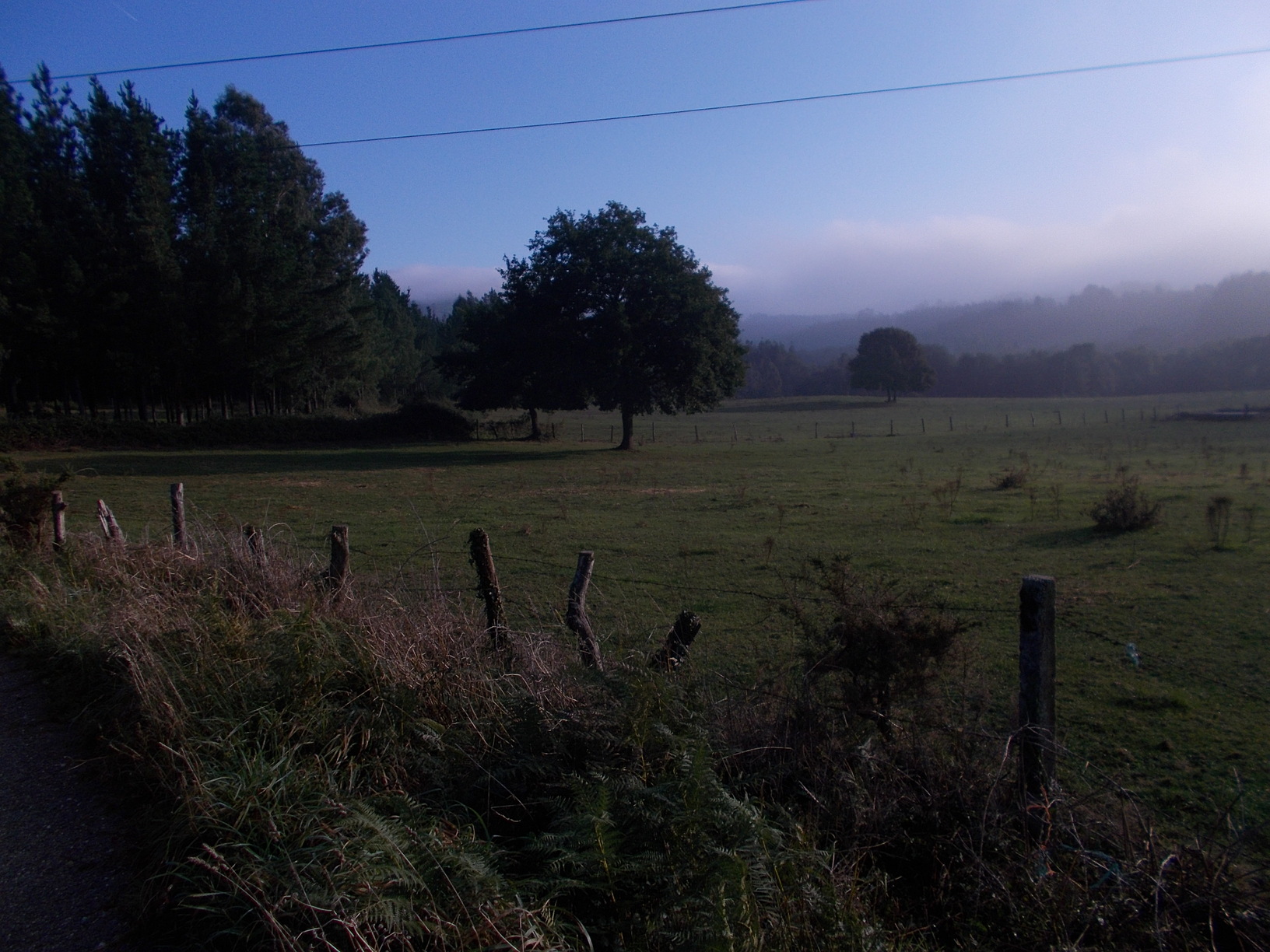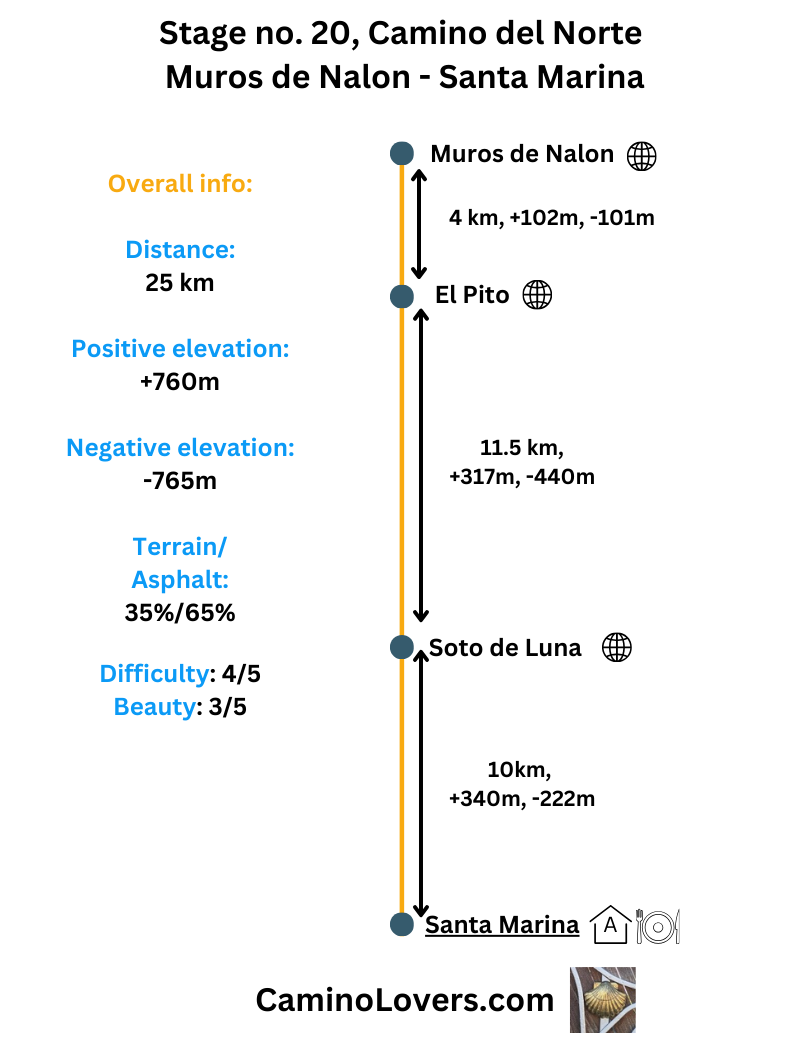
Basic Details
- Starting point: Iglesia de Santa Maria de Muros de Nalon (there are two pilgrim albergues in Muros de Nalon)
- Ending point: Small village of Santa Marina with a pension frequented by pilgrims (pilgrim friendly place with great prices).
- Availability of alternative routes: No. There isn’t really an option to reach Santa Marina following the coast, since the zone is rather rough, with plenty of private properties, and no trail one can follow along the coast (without encountering fences or impassable passages). There is a marked Camino variation that passes over the mountain more inland. However, this avoids Santa Marina and other small villages, and connects to the Camino just 10 kilometers after Santa Marina. Hence we do not include it in this guide. But I will share a link to the map of this variation, just for the case that it interests you: map of the detour (on the map you can see both the official Camino that passes through Santa Marina and other villages, and the mountain alternative that avoids them). Just for the record, I have never taken the mountain alternative and hence cannot speak much about it. However, since it is marked on maps as a cycling trail too, I do not expect it to be technical. Likely a wide gravel road or something of that sort :).
- Distance: Official Camino route: 25 km (download GPS here).
- Elevation difference: +760m, – 765m
- Link to online map: here.
- Difficulty score: 4/5
- Beauty score: 3/5.
- Terrain/asphalt: 35%/65% (What I like about this stage is that walking on asphalt roads is quite regularly relieved by a nice trail walk for a kilometer or two, and this cycle kind of repeats for the entire distance of today’s walk, all the way to Santa Marina).
- Next stage: Camino del Norte, stage no. 21, Santa Marina – Luarca.
- Previous stage: Camino del Norte, stage no. 19, Aviles – Muros de Nalon.
Elevation profile for the route
 – The stage may seem easy on paper, but you should not underestimate it. There are actually almost no flat sections, and you always alternate between climbing and descending, with the gradient of the climb surpassing 10% on several occasions.
– The stage may seem easy on paper, but you should not underestimate it. There are actually almost no flat sections, and you always alternate between climbing and descending, with the gradient of the climb surpassing 10% on several occasions.
Advanced info about the stage
- Trail marking: Generally really good for this stage. The only tricky part is the roundabout, exactly here, where the “mountain” alternative of the camino deviates from the official Camino, going slightly to the left and starting to climb immediately. In the past the marking was a bit confusing here, but I’ve heard they improved it now (clearly marking it is an alternative route), and hence you should be able to recognize it.
- Natural places worth seeing:
- A nice natural beach Concha de Aredo, 150 meters detour from the Camino. An interesting beach where a bit of sweet water from a small river mixes with the sea. Nice vegetation, good restaurant with beach views, and a place where many pilgrims stop to take a swim or just marvel on the endlessness of an ocean on any nice day. It isn’t very touristic and rarely gets crowded.
- As you can see in the gallery below, the camino follows some really nice small trails that pass through semi-rural countryside of a part of Asturias that isn’t particularly touristic. Hence while I do not have any other special tips except of the Concha de Aredo, this stage definitely isn’t bad in terms of natural beauty.
- Historical, architectural, and culinary places worth seeing:
- The village of Cudillero, 1.5 km detour from the Camino, but definitely worth making for any history and architecture lover. Spanish media label this place as one of the most beautiful villages in the entire Spain, and I cannot disagree. Built around a fishing port, the buildings breath history and one can feel harmony in the colors and the architecture style. The only downside is that the village is very touristic in the summer. But definitely worth a detour, especially if you walk the Camino in April-May or October-November.
- The long subterranean crossing below the A8 highway (the tunnel has several hundred meters, and there isn’t any light installed) is pretty interesting too from then point of construction and also it is the second longest subterranean pass on the entire Camino. Only the die-hard Camino lovers know which the longest one is ;).
- Camping/bivouac options on this stage: Not particularly difficult, since except of the zone of Cudillero, this part of the coast isn’t very touristic. What’s more, there isn’t really any trail connecting various points on the coast, and there is no marked hiking trail on the coast, which kind of discourages even the tourists that are in the zone. Hence if you turn north from any point or village between Soto de Luna and Santa Marina, you will encounter spots where you can pitch the tent and sleep in relative privacy. The two locations I will recommend are the beach of Gueirua, one of the most photogenic beaches on the entire Camino (if it was located in a more touristic area and there was an access by car it would be flooded with tourists; but since the isolated location and a relatively hard descent to reach it, the beach is typically empty in the evenings and you can camp there), and the Beach of Galinas, which isn’t so breath-taking but it is really solitary in the evenings, and nobody will bother you if you camp there, or on the grassy spot near the ancient mill that is on the edge of this beach… You have also one decent option for organized camping on this stage:
- Camping Los Padrones: 300 meters from the Camino, a rather old camping in a traditional style, with a bit outdated facilities but reasonably clean. The location is nice and natural, close to two beaches. Price super pilgrim-friendly (16 euros for two people in a tent). It is not entire clear though whether or not they accept dogs at the moment, so you should call upfront if you walk with a dog. The place doesn’t accept reservations but except of august it isn’t overly busy and you won’t have any problems getting a place for your tent.
- Dog friendly score: 3/5. There are enough green spots, spots with fresh water (sometimes you walk next to it, sometimes a short detour is necessary to reach a spot where your beloved companion can refresh itself in the water). On the other hand, there is still a lot of road walking (or at least walking on the side of the national road), and also a long subterranean pass (with no lighting installed), which can be scary for many dogs. People running accommodations in small places like Santa Marina are quite flexible, and even though they officially do not accept dogs, you can typically arrange something. And if you cannot, there is always the option of camping on the coast (see the paragraph above).
- Special remarks: None.
Accommodation options on today’s stage
* The infographic displays the number of pilgrim hostels (only pilgrims allowed), hostels (anyone allowed, shared rooms), and other accommodation options (hotels, pensions, etc, private rooms) in each point along the route, together with price range. For exact explanation of the pictograms we use check the explanations page. Below the infographic you will see our recommended picks (up to 3 pilgrim options and 1-2 “privacy” options, maximum five) for the stage, together with important information (but not too much info, just what you need :-)).

Recommended places to sleep along this stage
Pilgrim options:
- Albergue La Reguera, Soto de Luna (km 15). Reviews and location on Google maps here. A wonderful donation-based albergue with excellent reviews across all pilgrim platforms. 11 beds, check in from 3pm to 7pm. Based on the reviews on various platforms, there’s hardly anything to improve about this albergue… Nice & clean inside and outside, communal dinner and breakfast, great hosts. Highly recommended. Best way to reserve a bed: phone call, +34 630 777 409.
- Albergue de peregrinos de Soto de Luiña, Soto de Luna (km 15). Location and reviews on Google maps here. 40 beds, 10 euro/bed. A municipal albergue run by a local non-profit association, installations are a bit outdated, and it doesn’t have a charm of the La Reguera. Nevertheless, most people who decide to stop in Soto de Luna will stay here, since there aren’t enough beds in the donation based albergue. I would say it is good enough for one night :). Check in from 2pm, accepts reservations, reserve on +34 640 692 591.
- Pension Prada, Santa Marina (km 25). Location and reviews on Google maps here. It is a pension with private rooms, but I include it in pilgrim places, for two reasons. First the price, 15 euro, what is actually cheaper than what you’d pay in many pilgrim albergues along the northern route. And secondly, 90% of guests are pilgrims. There are 20 rooms, and typically enough space, since most camino guides end the stage in Soto de Luna (which I of course find strange, since it’s only 15 easy kilometers), that’s why in this guide we put Santa Marina as the end of the stage. Anyway, it is a good pension, with good attention to pilgrims, and I definitely recommend it as a place for the night. Recommended way to make a reservation: booking.com.
Privacy/luxury options:
- Hotel El Fornon, Novellana (km 21). Location and reviews on Google maps here. A beautiful hotel near the sea, frequented mostly by pilgrims. Affordable prices (from 50 euro/night/room), excellent reviews on all platforms. Great attention from the hosts, good quality food. It isn’t a luxury place, but for a pilgrim it can feel luxurious :). Check in from 2pm, recommended way of making a reservation: booking.com, or a phone call, +34 985 598 025, +34 985 598 082.
Pictures from the stage
 – Walking in a less touristic part of Asturias, you can enjoy some pleasant views of semi-rural Asturian countryside.
– Walking in a less touristic part of Asturias, you can enjoy some pleasant views of semi-rural Asturian countryside.
 – While there aren’t many beaches on today’s walk, you will pass by a really nice river areas a several times during the day.
– While there aren’t many beaches on today’s walk, you will pass by a really nice river areas a several times during the day.
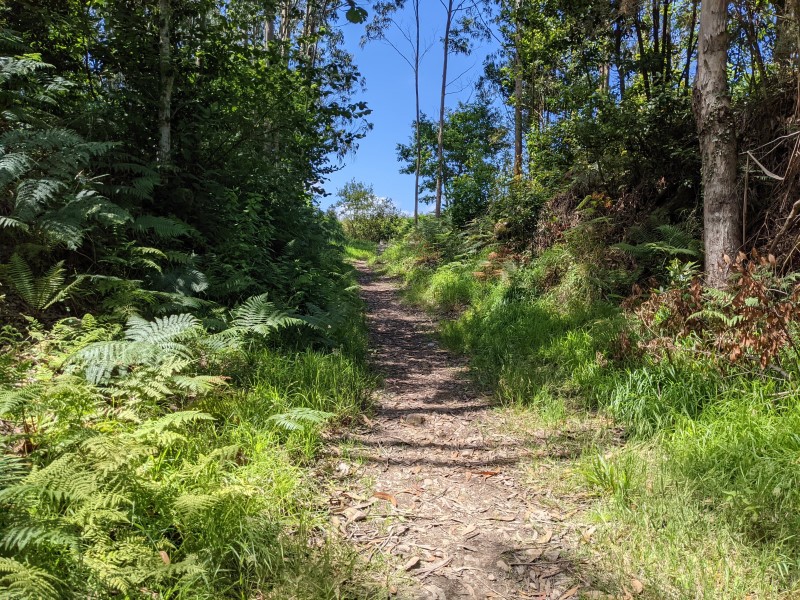
– One of the many short trail sections that add nice variety to today’s stage which, just like most stages of Camino del Norte, follows mostly paved roads.
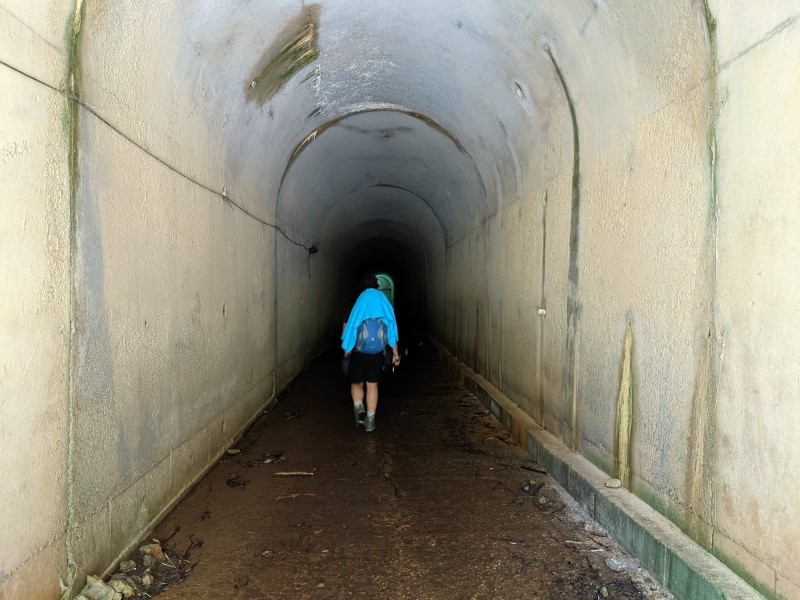 – A really long subterranean tunnel you will walk through on today’s walk, with the famous A8 highway above you (you cross it from south to north). Not something I would expect on the Camino, but it definitely adds some variety to the walk, and it is one of those spots one will remember :).
– A really long subterranean tunnel you will walk through on today’s walk, with the famous A8 highway above you (you cross it from south to north). Not something I would expect on the Camino, but it definitely adds some variety to the walk, and it is one of those spots one will remember :).
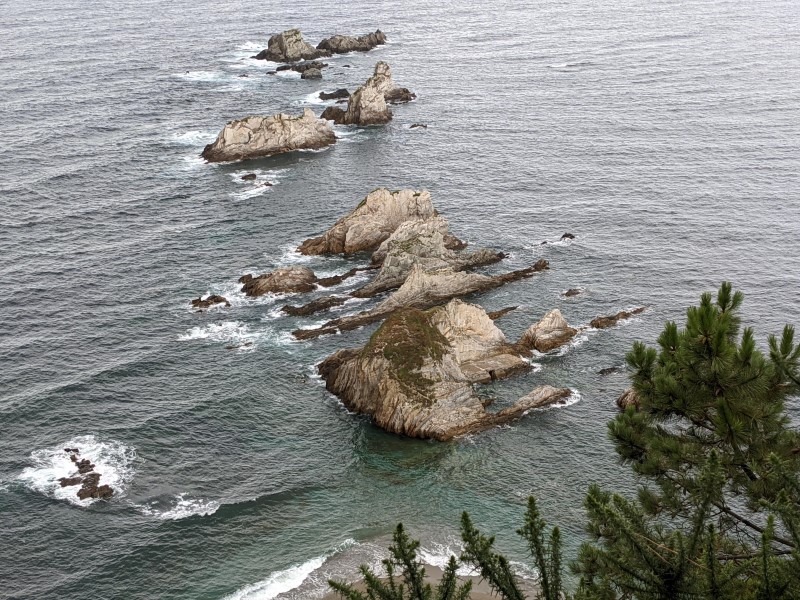 – The Atlantic coast is just 500 meters walking distance from the center of Santa Marina, the small village where you’ll sleep today (if you follow our guide). While there aren’t any super-touristic beaches, you can enjoy some nice views and solitude near to the ocean… and some of these beaches can actually steal your heart, such as the beach of Gueirua 🙂
– The Atlantic coast is just 500 meters walking distance from the center of Santa Marina, the small village where you’ll sleep today (if you follow our guide). While there aren’t any super-touristic beaches, you can enjoy some nice views and solitude near to the ocean… and some of these beaches can actually steal your heart, such as the beach of Gueirua 🙂
Few tips at the end
- If you feel like walking a short day, or the weather isn’t ideal for making over 25 kilometers, I highly recommend a nice family-run donation-based pilgrim hostel on the outskirts of Soto de Luna (roughly 16 kilometers from Muros de Nalon). It is called La Reguera. They accept reservations as well and speak some basic English, so you can secure your place in advance without having to worry. The only downside is that they open only at 3pm, which is quite late for someone walking only 15 kilometers from Muros de Nalon. Plan your day accordingly if you decide to stay in this pilgrim hostel.
- Regardless of where you stay for the night, make sure to walk to the coast. This zone of Asturias is very underrated (that’s why it is also much cheaper than the places where you were just a few days ago), with many hidden gems on the coast. Enjoy it while you can, since no doubt a few years from now the number of tourists will be twice or thrice as big as it is these days. The coast is never too far, and any small beach you walk to, you won’t be disappointed.
Next/Previous Stage
- Next stage: Camino del Norte, stage no. 21, Santa Marina – Luarca.
- Previous stage: Camino del Norte, stage no. 19, Aviles – Muros de Nalon.
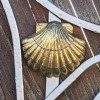


![Ultralight Packing List for Camino de Santiago [2025 Edition]](https://caminolovers.com/wp-content/uploads/2022/03/altra-shoes-640-x-480.jpg)
